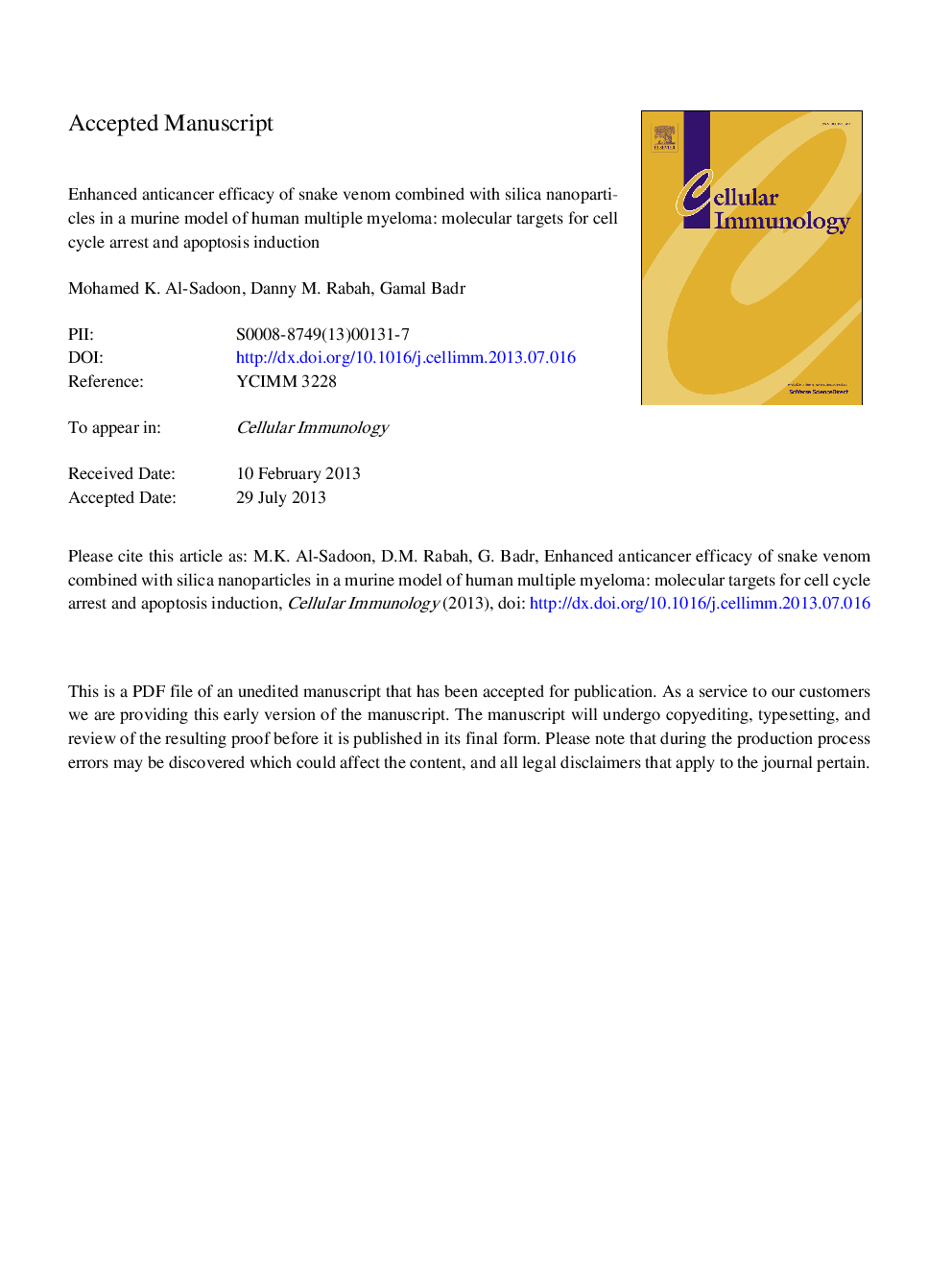| Article ID | Journal | Published Year | Pages | File Type |
|---|---|---|---|---|
| 8463921 | Cellular Immunology | 2013 | 40 Pages |
Abstract
Multiple myeloma (MM) is a clonal disease of plasma cells that reside in the bone marrow (BM). MM is an incurable disease; thus, screening for novel anti-myeloma drugs remains critically important. We recently described a silica nanoparticle-based snake venom delivery model that targets cancer cells, but not normal cells. Using this model, we demonstrated a strong enhancement of the antitumor activity of snake venom extracted from Walterinnesia aegyptia (WEV) in two breast carcinoma cell lines when the venom was combined with silica nanoparticles (WEVÂ +Â NP). In the present study, we aimed to delineate the in vivo therapeutic efficacy of WEVÂ +Â NP in an MM-bearing experimental nude mouse model. We found that treatment with WEVÂ +Â NP or WEV alone significantly inhibited tumor growth compared to treatment with NP or vehicle. WEVÂ +Â NP- and WEV-treated cancer cells exhibited marked elevations in oxidative stress and robust reductions in the levels of interleukin-6 (IL-6) and B cell-activating factor (BAFF). WEVÂ +Â NP also decreased the surface expression of the chemokine receptors CXCR3, CXCR4 and CXCR6 to a greater extent than WEV alone, and WEVÂ +Â NP subsequently reduced migration in response to the cognate ligands CXCL10, CXCL12 and CXCL16. Furthermore, we found that WEVÂ +Â NP strongly inhibited insulin-like growth factor 1 (EGF-1)- and IL-6-mediated MM cell proliferation, altered the cell cycle and enhanced the induction of apoptosis of MM cells. In addition, the results of treatment with WEVÂ +Â NP or WEV alone revealed that the combination of WEV with NP robustly decreased the expression of cyclin D1, Bcl-2 and the phosphorylation of AKT; increased the expression of cyclin B1; altered the mitochondrial membrane potential; increased the activity of caspase-3, -8 and -9; and sensitized MM cells to growth arrest and apoptosis. Our data reveal the therapeutic potential of the nanoparticle-sustained delivery of snake venom to fight cancer cells.
Keywords
Related Topics
Life Sciences
Biochemistry, Genetics and Molecular Biology
Cell Biology
Authors
Mohamed K. Al-Sadoon, Danny M. Rabah, Gamal Badr,
